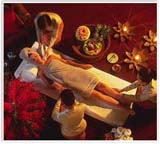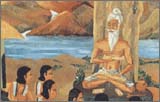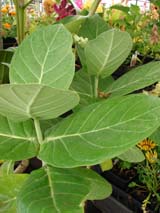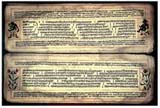Medical Research
Research in Āyurveda
Editor’s note
Nobody except one with a completely closed mind can deny that there is a wealth of knowledge available in ancient sciences like the Āyurveda. Contrary to our conventional way of looking at the advances of civilisation, it is quite possible that what we are witnessing today is a recovery after a fall from an advanced state of achievement in various forms of sciences and arts. Nevertheless these sciences have to be not only recovered but rediscovered using the methods of modern science since each age has its own dharma. This article throws light on some such aspects of research in Āyurvedic sciences.
Background
With the awakening of the human mind to the super-sensual reality behind life, man felt the need to propitiate its mysterious aspect by conducting ceremonies and rituals. From that stage, Āyurveda attained its age of maturity, emerging from incantation of magic ritual and usage of simple herbs, into a rationally expounded science of health and disease and systematic practice of remedies.
The continuity of tradition which Āyurveda has enjoyed is a process of growth and not mere survival. This lasted from the time of Atreya up to the end of the 17th century AD. It was therefore a process of scientific development and not a mere mechanical process operating on the basis of collective drill and training. The value of knowledge and consequently of education was fully realised by the early ancestors of our race. Knowledge was indeed so highly prized by the scholar that they dedicated their whole lives to the pursuit of learning, living away from the distractions of the world.
Gradually the different facts gathered by the seeker developed into a science of life and the scientists and sages devoted themselves to their search with a dedicated and inspired enthusiasm, often extending throughout their lives. In due course of time, they imparted to their successors what was revealed to them in their contemplation. These disciples in their own way checked and re-checked the truths given out to them, in the light of new data, to arrive at more scientific and reliable conclusions. Thus a body of ‘subjective truth’ developed in time into a precise science and these honest and sincere scholars always tried to communicate their contemplative experiences and the consequent conclusion upon the meaning and purpose of life to the people of the world.
When these transcendental experiences had been confirmed and attested by many more scholars, it gained the status of a proven science as it had become securely based on proven, demonstrated and verified facts.
The flow of research
Āyurveda, the science of life, is an eternal flow of knowledge which has expended from time immemorial for the benefit of humanity. Lord Brahma inculcated and compiled the entire Āyurveda wisdom in his Brahma-saṁhitā, which has thousands of chapters and hundreds of thousands of verses (1). In due course of time, this uninterrupted knowledge has emerged as a beneficial and acceptable wisdom through various phases of metamorphosis. Various scholars of different eras have tried to enrich this science and make it more practical with their traditional wisdom, clinical and experimental research. Gradually it became janopayogī, explorative, and kālajayī, time-proven. In this regard, various experiments have been carried out on the basis of classical principles and the science has been enriched with the incorporation of the results of those experiments.
In those research experiments, different alterations were made according to the need. Sometimes minute modifications in approach and procedure or in the preparation of medicine or combination of medicines were adopted for making the treatment more convenient, more effective and more adaptive for the era. The commentators, in their respective commentaries, have tried to explore the hidden, unexplored and difficult portions of the classics with their own clinical and research experiences.
Hence it reveals that textual literary research, experimental and clinical researches are mandatory to maintain the streamline flow of any research.
An example
In the phases of metamorphosis, principles, formulations, etc. have been repeatedly examined through a series of experiments and conclusions have been drawn on the basis of the outcome of such research (2). These evaluated and approved principles and formulations, etc. were implemented later on. In the course of time, these changes were again subjected to re-evaluation.
The following can be taken as an example of this procedure:
The ointment of the leaves of muder (Calotropis gigantea, R.BR.), the stalk of the thorny milk hedge (Euphorbia nerifolia, Linn.), the sprout of the bottle gourd (Lagenaria vulgaris, Ser.) and the Indian beech (Pongamia glabra, Vent.), prepared in goat’s urine, is depicted as an excellent application for piles in Caraka saṁhitā (3). In some editions of this work, the use of milk of muder is also recommended (4), which suggests that this practice was also being used by some schools of physicians and researchers. The author of Aṣṭāñga hṛdaya has justified this research and changed this portion of the verse as ‘milk of muder’(5). This alteration also favours making a desirable paste. Research in this regard has been continued for the next five hundred years and Ācārya Cakrapanidutta has further changed this preparation and the milk of both the muder and thorny milk hedge have been advocated instead of the leaves of muder and the stalk of the thorny milk hedge respectively(6). Various practical angles regarding the use of the different parts of the plants, the preparation and effectiveness, etc., have been re-evaluated in this research process.
Discussion
Some of the highest intellects have tried their level best to accelerate the outflow of knowledge of the original medical text, overcoming the time-bound adversities (7). These scholars magnified the views of the text through scientific and valuable up-to-date clinical experiments so that even those of comparatively less intellect could grasp the entire knowledge clearly (8). The basic theme was truly versed by stalwart professionals and accordingly commented on with hidden textual perfections with the clinical outlook which was in practice then (9). Therefore, this amplification of the subject was properly and scientifically inculcated by the disciples and practised thoroughly due to its time-proven validity (10).
The knowledge is intensified with proper justification (11), the professionals’ knowledge is dignified with practical application (12), and specifically the medical knowledge is accelerated with several clinical practices and profound justification (13). The clinical applications always prove its utility, justifying the ambit of basic sciences like physics, chemistry, and biology along with anatomy, physiology, and biochemistry, etc. The ultimate is to treat the disease either in preventive or in curative aspects (14).
Conclusion
On the basis of this discussion, it may be concluded that research is the life-line of any science, especially medical science. The ever-flowing ancient medical texts are metamorphically analysed with the thoughts of different commentators of different times and still in use due to the relevancy of its sound, appropriate and varied day-to-day applicability. From time to time, researchers and commentators, on the basis of their wisdom (15), enhance the utility of this science for better acceptance. This nourishes the clinical and technical wisdom and makes the subject acceptable and fit for the respective era. This evolution has continued from the very beginning and today, in the era of technology, this flow of research exploration into all aspects of Āyurveda is also mandatory.
References
1. (Ed.) Trikamji, Ācārya. Sūtrasthāna, 1st chapter, 6th śloka, Suśruta saṁhitā, Nibandhasamgraha commentary by Dalhana, Yadavji, Chaukhamba Orientalia, 6th edition, 1997, p. 2.
2. (Ed.) Trikamji, Ācārya. Agnivesh. Vimansthan, 8th chapter, 37th śloka , Caraka saṁhitā, Āyurveda Depika commentary by Cakrapanidutta, Pt. Yadavji, Rastriya Sanskrit Samsasthan, reprint 2006, p. 268.
3. (ed.) Kaviraj, N. Sengupta & Sengupta,B. Ācārya. Agnivesh. Ciktisāsthan, 14th chapter, 31st śloka, Caraka saṁhitā, Āyurveda Depika commentary by Cakrapanidutta and Jalpakalpataru commentary by Gangadhar, Rastriya Sanskrit Samsasthan, reprint 2002, p. 2876

4. (Ed.) Trikamji, Ācārya. Op Agnivesh. Chiktsasthan, 14th chapter, 57th śloka, Caraka saṁhitā, Āyurveda Depika commentary by Cakrapanidutta, Rastriya Sanskrit Samsasthan, reprint 2006, p. 504.

5. (Ed.) Bhisagācārya Harishastri Paradakara Vaidya. Vagbhat. Cikitsāsthan, 8th chapter, 25th verse, Aṣṭāñga hṛdaya, Sarvangasudara and Āyurveda Rasayan commentary by Arundutta and Hemadri, Chaukhamba Orientalia, 8th edition, 1998 p. 645.
6. (Ed.) Sharma, P.V. Cakrapanidutta, Ārshocikitsā, 5th chapter, 5th śloka, Cakradutta with Ratnaprabha commentary by Nischalkara. Jaipur; Svami jayaram Das Ramprakash Trust, 1st edition, 1993, p. 161.
7. (Ed.) Brahmashankar Shastri. Bhisagratna Madhav, Ashonidana, 5th chapter, 9th verse, Mādhavanidāna, Madhukosa commentary by Vijayrakshita and Srikanthadutta, Chaukhamba Sanskrit Samsthan, 3rd Edition 1993, pp. 1-2.
8. (Ed.)Trikamji, Ācārya. Agnivesh. Sūtrasthāna, 1st chapter, 1st śloka, Caraka saṁhitā, Āyurveda Depika commentary by Cakrapanidutta, Rastriya Sanskrit Samsasthan, reprint 2006 pp. 1-3.
9. Ibid., p. 7.
10. Ibid., pp. 7-8.
11. Op. cit. Vimansthan, 4th Chapter, 8th śloka, Caraka saṁhitā, Āyurveda Depika commentary by Cakrapanidutta, Pt. Yadavji, Rastriya Sanskrit Samsasthan, reprint 2006, p. 248.
12. Sūtrasthāna, 9th chapter, 18th śloka, Caraka saṁhitā, Cakrapani Āyurveda Depika commentary by Cakrapanidutta, Rastriya Sanskrit Samsasthan, reprint 2006, p. 64.
13. Ibid., p. 63.
14. Ibid., p. 187.
15. Op. cit. Vimansthan, 6th chapter, 4th śloka, Caraka saṁhitā, Āyurveda Depika commentary by Cakrapanidutta, Rastriya Sanskrit Samsasthan, reprint 2006, p. 253.
Dr. Asit Panja is Lecturer at the Postgraduate Department of Basic Principle, National Institute of Āyurveda, Jaipur.
Share with us (Comments, contributions, opinions)
When reproducing this feature, please credit NAMAH, and give the byline. Please send us cuttings.


 Atreya
Atreya
 Leaves of muder
Leaves of muder
 Āyurvedic research
Āyurvedic research
 A ancient texts
A ancient texts